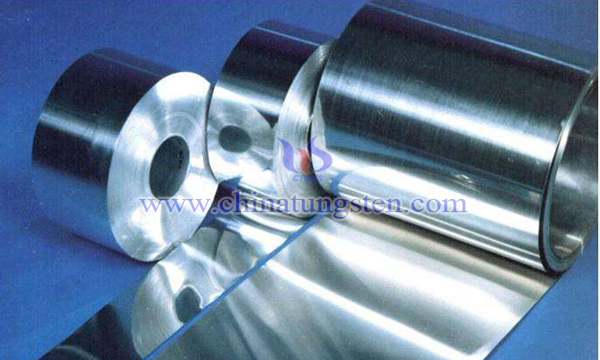Rare Earth Being Added to Enhance Tungsten-Based High Specific Gravity Alloy
- Details
- Category: Tungsten Information
- Published on Wednesday, 31 July 2019 01:30
Tungsten-based high specific gravity alloys are widely used in the defense industry and aerospace for their high performance, high strength, high toughness, strong absorbing ability, good electrical and thermal conductivity, high corrosion resistance and good ductility. And civil industry, is a very important dual-use material for both military and civilian.
In recent years, with the rapid development of science and technology, the comprehensive performance of tungsten-based high specific gravity alloys has been put forward with higher requirements. The performance of traditional tungsten-based high specific gravity alloys is far from satisfactory. Due to its unique atomic structure and activity, rare earths have been reported as a grain growth inhibitor in the field of tungsten alloys.

Rare earth has been added to enhance tungsten-based high specific gravity alloy composites, which improve the binder phase distribution, refine the grain size and improve the mechanical properties of the material are achieved by the following technical solutions:
S01: pre-mixing the prepared tungsten-based high specific gravity alloy base powder and rare earth oxide powder to obtain a mixed raw material, and then putting the mixed raw material into a high-energy ball mill according to a ball ratio of 5:1 for ball milling, and the ball milling time is 2h, the ball milling medium is anhydrous ethanol, the ball mill material is 304 stainless steel, the rotation speed is 300r/min, the ball mill tank is pre-vacuated before the ball milling starts, and then argon gas is introduced as a protective atmosphere.
S02: The obtained composite powder was annealed in a tube type high-temperature sintering furnace at 800 ° C for 1 h, and the annealing atmosphere was hydrogen.
S03: The obtained composite powder is placed in a high-energy ball mill according to a ball-to-batch ratio of 5:1 for secondary ball milling, the ball milling time is 2 h, the ball milling medium is anhydrous ethanol, the ball mill material is 304 stainless steel, the rotation speed is 300 r/min, the ball mill Before the start, the ball mill tank was pre-vacuated, and then argon gas was introduced as a protective atmosphere. The composite powder after the second ball milling was vacuum dried in a vacuum oven at 70 ° C for 1 h.
S04: The obtained composite powder is charged into a graphite mold, and the graphite mold is placed in a discharge plasma sintering furnace for sintering, the sintering temperature is 1250 ° C, the heat preservation is 5 min, the sintering pressure is 50 MPa, the sintering atmosphere is vacuum, and the vacuum degree is less than 10 Pa. After the sintering is completed, it is cooled with the furnace.
S05: The graphite mold is continuously cooled at room temperature, and a composite rare earth oxide-reinforced tungsten-based high specific gravity composite material is obtained after demolding.
The above process adopts a secondary ball milling method before the activation sintering step while adding the composite rare earth oxide, thereby ensuring the uniform distribution and volume fraction of the binder phase in the alloy, so that the alloy has both excellent microstructure and finer. The nearly all-compact body with W grain size and density of over 98%, the comprehensive performance of the composite material is improved, and it is of great significance for the development and application of high-strength and ultra-fine grain tungsten alloy.
- Tungsten Alloy Manufacturer & Supplier, Chinatungsten Online: www.tungsten-alloy.com
- Tungsten News & Prices of China Tungsten Industry Association: www.ctia.com.cn
- Molybdenum News & Price: news.molybdenum.com.cn
- Tel.: 86 592 5129696; Fax: 86 592 5129797; Email: sales@chinatungsten.com



 sales@chinatungsten.com
sales@chinatungsten.com